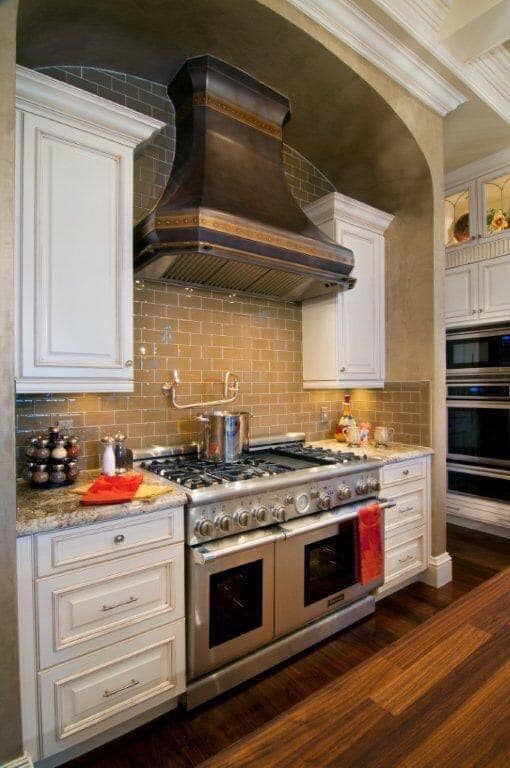- Consider Your Kitchen Layout
Your kitchen layout determines how best to fit your range hood into place. There are many ways you can install your range hood depending on what suits your lifestyle preferences. It can either be mounted on the wall, suspended from the ceiling, made part of an overhead canopy, or under your cabinets. For instance, if your cooktop is at the center of your kitchen and you purchase an under-cabinet range hood then it will not be a suitable option for you as it is not practical for your space.
- Ducted or Ductless
A kitchen range hood can be either ducted or ductless and the decision to choose between the two depends on what works best for you.

A ducted range hood is connected to a duct that extends to the exterior of your home. It eliminates unpleasant odors and air impurities from your kitchen by forcing it to the outside. Ductless range hoods require no ductwork because they recirculate the air in your kitchen with the help of a mortar and a charcoal filter. Airborne grease and combustion products get trapped as they pass through a charcoal filter and then the purified air flows back into the kitchen.
- CFM Range
The velocity at which air flows out of a space is measured in cubic feet per minute (CFM). The CFM range is used to refer to a range hood’s capacity to extract odors and air impurities from your kitchen. If your range hood has a low CFM range, it will not provide adequate ventilation to your kitchen. On the contrary, too much CFM can put a lot of stress on your electric bills because it requires a lot of power for ventilation and air conditioning. The best way to determine the best CFM for your hood is to divide the total BTU rating of your gas stove by 100.
- Range Hood Material
Range hoods come in a wide array of materials such as stainless steel, antiqued brass, bronze, and many more. The material used not only adds a touch of elegance and functionality but also plays a significant role in maintenance. A stainless-steel range hood is a cost-effective option because it is easy to clean and maintain. If the look of stainless steel does not appeal to you, you can always consider other utilitarian options such as antiqued brass, copper, or bronze. Although these finishes may require some little maintenance, they can add a touch of rustic elegance to your space as they weather beautifully over time. Range hoods with porous materials like wood may look appealing at first but they can be difficult to clean when they absorb grease. This can lead to stains and potentially off-putting smells.
- The Exhaust System
If you have a ducted exhaust system, consider mounting it to an exterior wall instead of venting it to another interior space of your home such as the attic or basement. Non-vented systems are generally less efficient compared to the ducted systems because they recirculate the air in your kitchen rather than direct it outside. However, they still work great if they are properly maintained through regular cleaning and filter replacement. It is always important to know upfront what you expect from your exhaust system to decide which one works best for you.
- Installation Costs
The cost of purchasing a range hood can vary widely depending on the size, power, and materials used. Special hood features like automatic shut off, heat sensors, and the type of built-in lighting may offer more functionality but also affect the overall cost of your range hood. Apart from the initial costs of purchase, it is also important to factor in the installation costs since the labor and materials like fittings and connectors determine the overall amount you will spend on your hood.
Generally, you would want a range hood that delivers the best in terms of performance and overall look and feel it creates to your kitchen. Selecting a new range hood requires a firm understanding of your budget and a touch of designer intuition. When purchasing a range hood, make sure it speaks to your taste and coordinates with the look of your kitchen.
